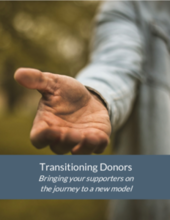Introduction
Good ministry cannot happen without stable funding. When planning to transition your model of care, it can feel overwhelming. How will you bring donors with you? How will you fund initial costs? Over the past year, we have studied organizations who have successfully transitioned to a family-based model and brought their donors with them.
Getting donor buy-in is the biggest challenge
The most significant problem that orphan and vulnerable children-focused organizations face is getting buy-in and bringing donors along on the journey. Without donor buy-in, transitioning can come to a halt due to inadequate funding. This can negatively impact an organization and the children in their care. As a result, choices about care quality may need to be made based on funding, rather than the best interest of children. Donors may disconnect because they do not understand the need for transition and change. They may be very committed to the current model. Additionally, donors may have concerns for child safety that need addressing, along with questions regarding the orphanage buildings, staff, and infrastructure. That’s why we focused on researching this critical issue to help you. CAFO engaged with markempa to study how OVC-serving organizations inspired donors to give toward a new model of family-based care. In this guide, you’ll learn the five steps to help transition your donors to improve fundraising outcomes and create the financial capacity to provide better care for vulnerable children and families.
Need for family-based care
Both Scripture and science affirm that the best environment for children is within a loving, secure family. Our work should always seek the best interest of the child, including placement in a permanent family setting as soon as possible. For this reason, a significant number of OVC-serving organizations that provide residential care are now shifting towards family-based care models. Family-based models of care focus on providing the love, nurture, and security that allows a child to thrive through reintegration with biological parents, kinship care, foster care, or adoption. Additionally, a vital part of supporting family care is strengthening families to prevent unnecessary separation. See the resources on page 47 for additional materials and tools for family-based care.

